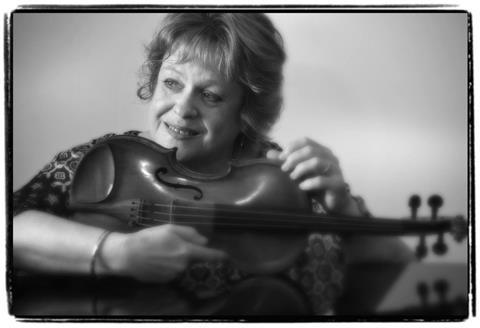The Australian violin pedagogue Alice Waten (1947-2022) shared advice on achieving fluidity and expressivity in the left hand in an interview with Joy Lee from early 2022

Explore more Technique articles like this in The Strad Playing Hub
What are some of the most common faults you see in the left hand?
When asked to place the fingers on the violin, invariably a student will show me a movement of the whole arm, with an over rotation of the elbow.
I show them how unnecessarily large this movement is and how easy it is to turn your hand without involving the upper arm, as in turning a doorknob. Because this is a natural movement most students can do it immediately.
The placement of the thumb is vital and although it will move around, it should not be stretched from its soft position.
In order to fully express our musical feelings, it is necessary to be able to move freely, with flexibility and agility.
How do you teach the shape of the fingers?
In order to keep the hand soft, we need to open back from the fourth finger.
Depending on the length of the fingers, I teach that short fingers should be close to the neck, and long fingers can be further away from the neck of the violin.
The fourth finger should not be too round, as the nail will be touching the string, making the small joint immovable which triggers many problems in sound and dexterity.
We need the pads of the fingers on the string with no contortion of the wrist.
Another common fault is pressing the fingers together at the first joint from the knuckle, even when the fingers are not playing this causes stiffness.
These technical issues influence intonation, shifting and vibrato.
Can you suggest some specific exercises for these problems?
• Rest your left arm against your side.
• Make a fist.
• Open your fingers (don’t stiffen).
• Bend your arm bringing it to playing position.
• Relax the upper arm with no tension in the shoulder.
• Keep your hand soft and wriggle your fingers against your thumb.
• Turn your hand to a playing position without movement of the elbow.
• Lift the violin up and down, placing your hand lightly over the fingerboard.
These exercises are helpful in feeling freedom of movement with the least amount of effort.
Could you comment on the changing of positions?
The art of shifting and changing position requires sensitivity in the fingers and thumb. Even when all the fingers appear to be on the string, only one needs to hold the string down. Mastering the free movements of lightness, elasticity and agility are essential in shifting, as well as for expressiveness in playing.
Firstly check that there is no squeezing of the violin beteen the chin and the shoulder. A carefully chosen shoulder rest and chin rest should allow the head to rest lightly on the violin, without lifting the left shoulder.
The finger glides on top of the string, but does not leave the string until it reaches the necessary note. The ear should be trained to identify the pitch required. Too much pressure on the strings causes tension and inhibits movement.
The thumb should not be stretched from its soft position, however it helps to hold the violin up and provides a counter movement of the fingers. It also aids the feel of the string and neck of the violin in orientation, the feel of where the notes are positioned.
Read: Cornerstones for violinists: the Australian violinist and teacher Alice Waten (1947-2022)
Read: Australia mourns prominent violin teacher
Read more Featured Stories like this in The Strad Playing Hub
The number one source for playing and teaching books, guides, CDs, calendars and back issues of the magazine.
In The Best of Technique you’ll discover the top playing tips of the world’s leading string players and teachers. It’s packed full of exercises for students, plus examples from the standard repertoire to show you how to integrate the technique into your playing.
The Strad’s Masterclass series brings together the finest string players with some of the greatest string works ever written. Always one of our most popular sections, Masterclass has been an invaluable aid to aspiring soloists, chamber musicians and string teachers since the 1990s.
American collector David L. Fulton amassed one of the 20th century’s finest collections of stringed instruments. This year’s calendar pays tribute to some of these priceless treasures, including Yehudi Menuhin’s celebrated ‘Lord Wilton’ Guarneri, the Carlo Bergonzi once played by Fritz Kreisler, and four instruments by Antonio Stradivari.

























































No comments yet